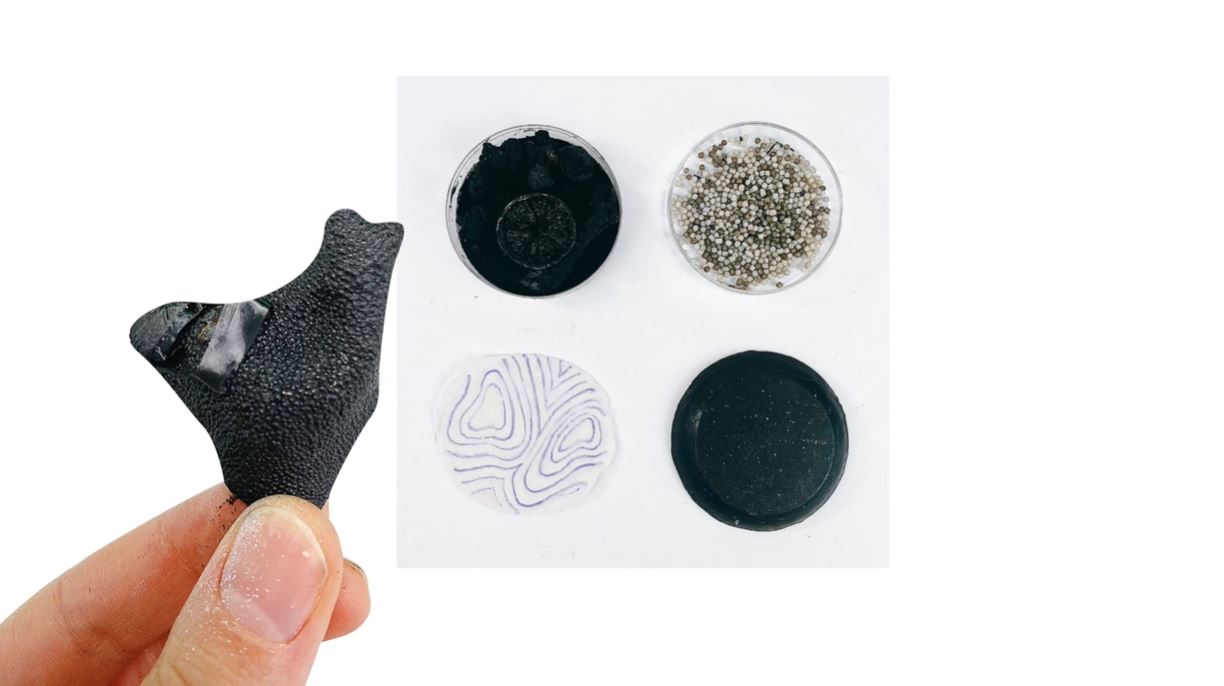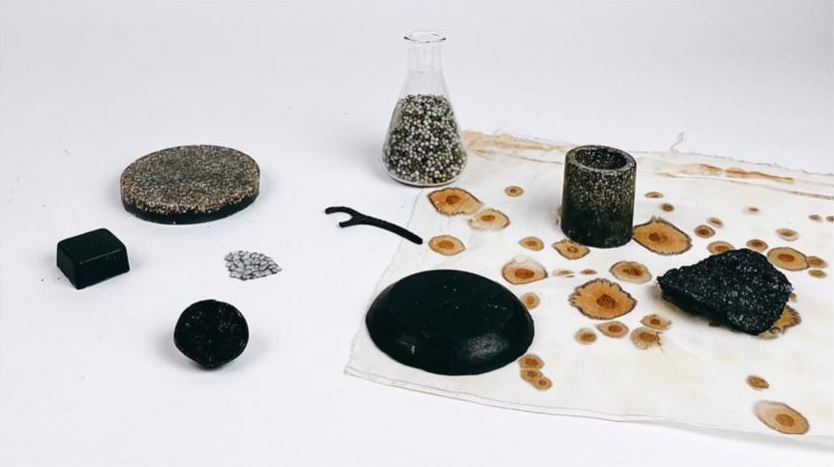Can Food Scraps Reduce Electronic Waste?

VISION: Replace petroleum-based plastics in electronics with a carbon-capturing bioplastic made from agricultural waste.
TEAM: Jessica Smith, Charlotte Böhning, Mary Lempres
SCHOOL: Pratt Institute
In 2019, the United States generated nearly 7 million tons of electronic waste. This includes obsolete TVs, laptops, phones, printers, etc.—90% of which pile up in landfills in developing countries. From exploitative supply chains to hardware graveyards, our devices are harming the planet at every stage of production.
To mitigate the carbon footprint of electronics, a group of Pratt Institute students developed a sustainable replacement for the plastic casings of electronics products by using biochar as a primary ingredient. Biochar, a carbon-rich, charcoal-like material, is the byproduct of heating plant waste or manure in the absence of oxygens, a process called pyrolysis. Its black color makes it a suitable alternative to black plastics, which make up 15% of all plastic products and are especially harmful because recycling machines struggle to identify them. The team combined biochar with PHA (polyhydroxyalkanoate), a biodegradable bacterial polymer, to prototype an alternative they call BI/OME. The material’s properties are comparable to what it replaces and it can be produced at industrial scales, sequester carbon, and theoretically also be used as fertilizer.
In the future, the team said, “BI/OME products could be disposed of in any backyard.”





